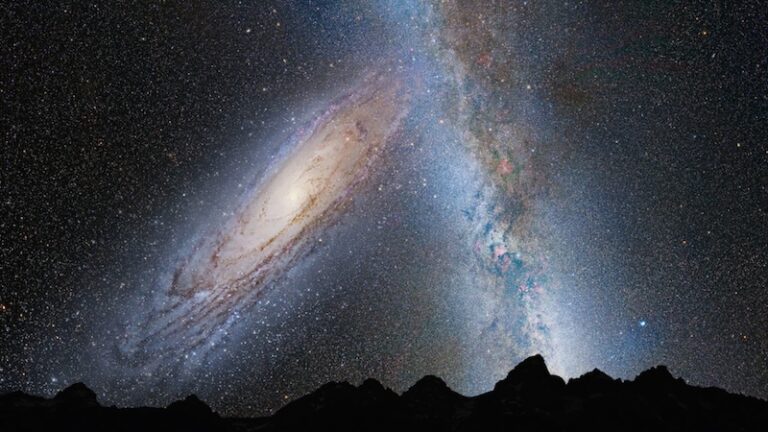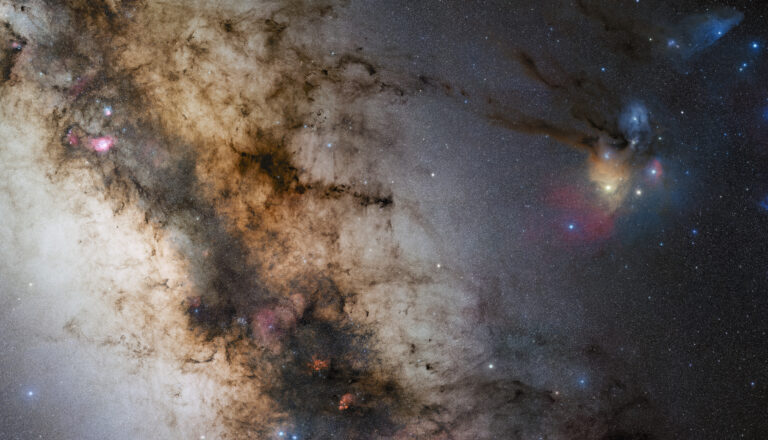Key Takeaways:
Stretching about 3,000 light-years long, this splinter of stars and gas juts out from the Sagittarius Arm at a roughly 45° angle. While it’s not unusual to spot sharply-angled spurs (also called feathers) in other spiral galaxies, it’s the first time that astronomers have noticed a defect this stark in our own galaxy’s arms.
From Earth’s position within the Milky Way, it’s difficult for scientists to see the entirety of the galaxy. Astronomers used data obtained by the now-retired NASA Spitzer Space Telescope and by the European Space Agency’s Gaia mapping mission to confirm they were seeing a section of the Milky Way protruding from the rest of the arm. “It is only the recent, direct distance measurements from Gaia that make the geometry of this new structure so apparent,” said study co-author Alberto Krone-Martins, an astrophysicist at the University of California, Irvine, in a statement.
Though this would be a rather gruesome fracture in flesh and bone, in cosmic terms, this area is spectacular, filled with star-forming vistas. The analysis shows that four famous deep-sky objects — the Eagle Nebula (M16), the Omega Nebula (M17), the Trifid Nebula (M20), and the Lagoon Nebula (M8) — all lie within this structure.
Astronomers believe such spurs are formed by a combination of gravity, rotation, and shear. Because these structures bear the imprint of those forces, finding more spurs like this one could help scientists better understand how spiral galaxies form their graceful, curving arms.










